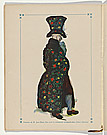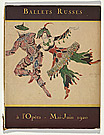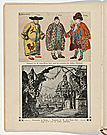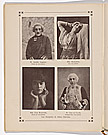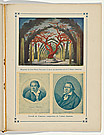José-María SERT

José-María Sert y Badia (b Barcelona, 21/24 December 1874/76 – d Barcelona November or December 1945) began his career in the studio of his father, producing tapestry cartoons and other fabric designs. He travelled to Italy to study Renaissance fresco painting, before settling in Paris in 1899. Initially a society painter, but after receiving several mural commissions Sert dispensed with easel painting and focused on large-scale works for churches, private houses and public buildings. He received commissions from across Europe and the United States—including the Waldorf Astoria and the Rockefeller Centre in New York and the Council Chamber at the United Nations in Geneva.
He exhibited several times at the Paris Exposition Universelle, was also a contributor to the 1907 Salon d’Automne, and regularly exhibited his work in both London and New York. He was first commissioned to produce theatre designs in 1910 for La Vida es sueño (Life is a dream), Théâtre d’Art, Paris. In 1914 he was the first non-Russian designer Diaghilev chose to work for the Ballets Russes. He began working with the company on the scenery for its production of La Légende de Joseph (costume designs produced by Léon Bakst). He went on to produce designs for two other Diaghilev productions, Las meniñas (1916) and Ballet de l’Astuce féminine / Cimarosiana (1920). Following Diaghilev’s death in 1929, Sert continued to work on ballet productions for de Basil’s new Ballets Russes, designing Pavane in 1940.
Unknown photographer
José-María Sert on mural site 1933 (detail) Bettmann collection, © Bettmann/CORBIS


